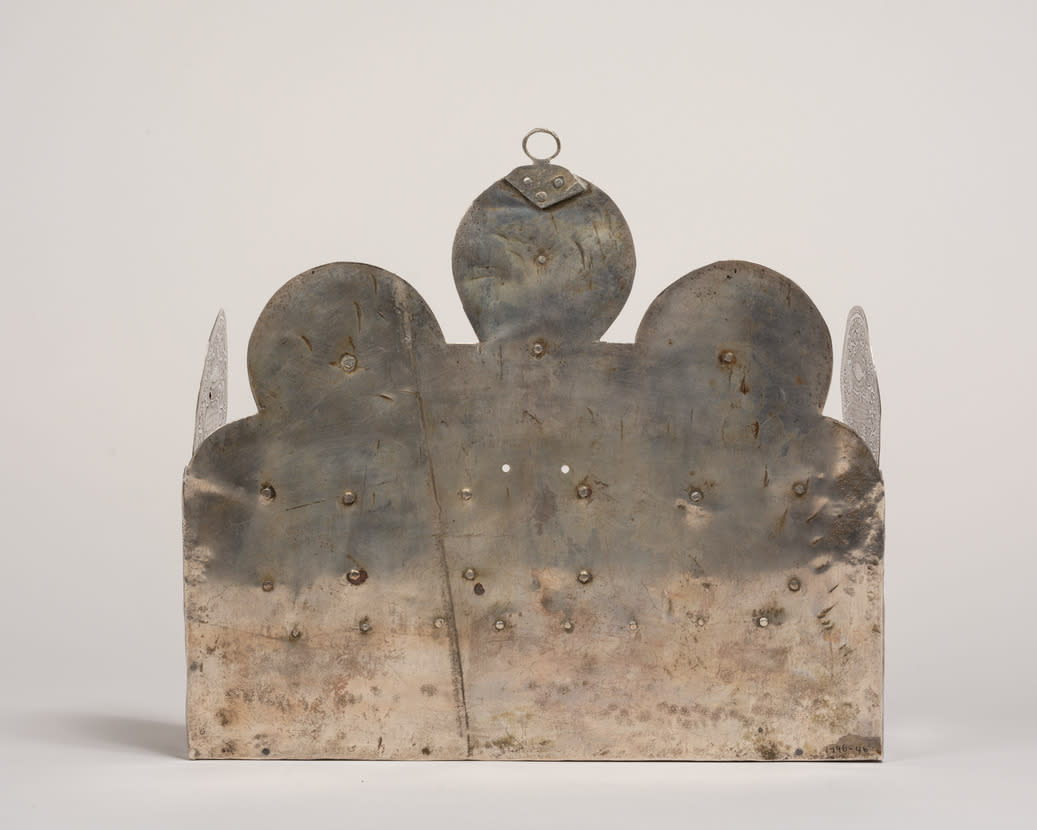
- Object Name:
- Hanukkah Lamp
- Place Made:
- Possibly Essaouira, Morocco
- Date:
- 19th–early 20th century
- Medium:
- Silver: traced, appliqué, parcel-gilt, and cast
- Dimensions:
- 10 3/4 × 12 1/16 × 4 1/8 in. (27.3 × 30.6 × 10.5 cm)
- Credit Line:
- Purchase: Judaica Endowment Fund and the Nash Aussenberg Memorial Fund
- Accession Number:
- 1996-46
On View
Silver lamps from North Africa are rare, and the form of and ornamentation on this piece do not appear in other Hanukkah lamps. Closely related decorative devices and motifs are, however, employed in jewelry. Gilt appliqué rosettes like those on this lamp are characteristic of bracelets, anklets, and belt buckles from Essaouira. These works date from the nineteenth century through the early years of the twentieth century, after which silversmithing in Essaouira began to decline. Another design element on this lamp consists of incised rosettes with circular centers and radiating striations on the petals. This particular form of rosette decorates jewelry from Essaouira, Marrakech, and Meknes, and dates from the nineteenth to early twentieth century.
The sidepieces on the lamp are incised with images of a fish and a bird. Both can be symbols of fertility, since they are creatures capable of laying large quantities of eggs. Birds, especially in pairs, can often symbolize love in Islamic culture. It is therefore possible that this lamp was intended as a wedding gift, incorporating good wishes for many children.
The sidepieces on the lamp are incised with images of a fish and a bird. Both can be symbols of fertility, since they are creatures capable of laying large quantities of eggs. Birds, especially in pairs, can often symbolize love in Islamic culture. It is therefore possible that this lamp was intended as a wedding gift, incorporating good wishes for many children.
Information may change as a result of ongoing research.